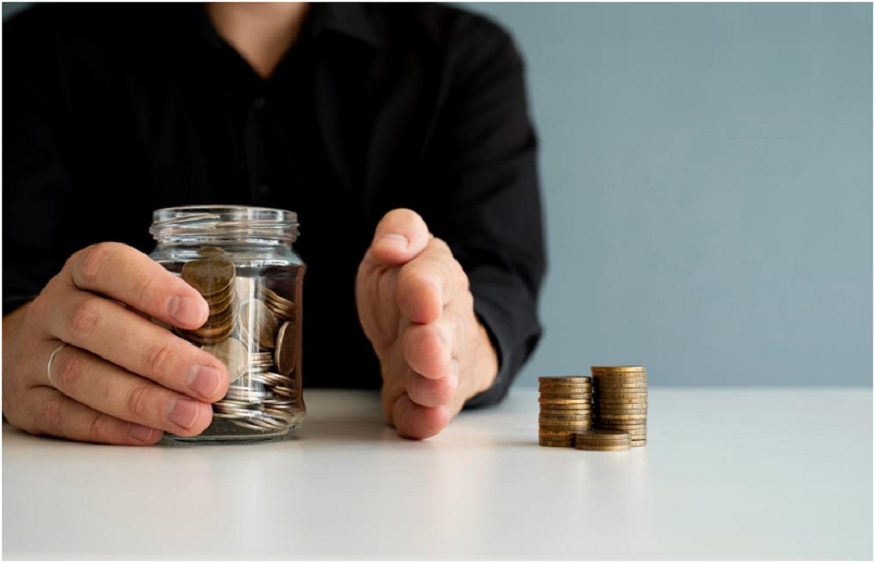
How Can You Quickly Build an Emergency Fund on a Limited Budget?
Life is full of surprises. A surprise hospital bill, layoff, or emergency family expense can disrupt even the best-laid financial plans. This is where an emergency fund makes sense, a financial cushion that keeps you afloat in bad times without going into debt. But suppose you are already living on a very tight budget. The prospect of saving extra money seems like an impossibility. The reality, however, is that by making small changes, being disciplined, and approaching it the right way, it is achievable to accumulate an emergency fund quicker than one may imagine. In unavoidable situations, an online credit app can provide instant access to funds, helping you manage urgent expenses until your emergency savings grow.
What is an Emergency Fund and Why Do You Need One?
An emergency fund is cash reserved for unexpected, unscheduled expenses. If you don’t yet have one, even a 30000 personal loan can act as a temporary safety net during financial emergencies.This fund is not for vacations, shopping, or celebrations like regular savings. It is for things such as:
- Medical crises
- Unexpected loss of income
- Car or house repairs
- Family emergencies
Practical Steps to Build an Emergency Fund Quickly
1. Set a Realistic Target
Rather than going all the way for 6 months of expenditure, start from a small, manageable goal. For instance, ₹10,000 or ₹25,000 can be your initial goal. Once you hit it, stretch towards the next. Small goals do not feel so daunting and keep you going.
2. Create a Separate Savings Account
Combining your emergency fund with your daily account makes it too convenient to use the money for things that are not emergencies. Create a separate savings account (ideally one without fees and with reasonable interest rates) and reserve it for your emergency fund. This separation in your mind is what makes a big difference.
3. Automate Your Savings
Even with a limited budget, saving a fixed sum every month is better than waiting until the end of the month to see what is left. Create an auto-transfer from your salary account to your emergency fund, even if it’s only ₹500 or ₹1,000 a month. Small amounts add up over a period.
4. Reduce the Small Everyday Expenses
We tend to underappreciate how much money escapes us in daily expenses. Breaking a couple of habits can boost your savings.
For instance:
- Cutting down on food delivery or restaurant visits.
- Opt for public transport or carpooling whenever possible.
- Placing constraints on online impulse buys.
- Scrapping unused membership or subscription plans.
Shifting even ₹50 to ₹100 per day to your fund could provide you with an additional ₹1,500–₹3,000 per month.
5. Use Windfalls Wisely
Any surprise income, a tax refund, a bonus at work, cashback, or even a gift, would be deposited straight into your emergency fund rather than being used immediately. This will increase your savings far quicker than monthly savings alone.
6. Sell Unused Items
Look around your home; old electronics, unused furniture, clothes, or even books can bring in extra cash. Platforms like OLX, Quikr, or local thrift groups make it easy to sell second-hand items. This not only declutters your home but also adds a quick lump sum to your emergency fund.
7. Take Up a Side Hustle
Having little money to spare, additional income is usually the quickest means to accumulate savings. A side freelancing assignment, tutoring, delivery work, or weekend work can earn more money, specifically for your emergency fund. Even ₹3,000–₹5,000 per month from side jobs can hasten your progress considerably.
8. Refrain from Lifestyle Inflation
As your income increases, avoid the temptation to upgrade your lifestyle the moment you do so. Rather, invest some portion of the increase in your emergency fund until you’ve reached your goal. For instance, if you receive a ₹5,000 salary increment, send a minimum of ₹2,000 of it to savings.
Mistakes to Avoid While Building an Emergency Fund
Leaning on credit cards rather than savings: Turning towards debt in times of need can lead you down a vicious cycle of interest payments.
- Spending emergency funds on risky investments: Your emergency fund should be liquid and safe, and not stuck in volatile investments.
- Using the fund for non-emergency purposes: Birthday celebrations, holidays, or shopping are not emergencies.
How to Keep Your Emergency Fund
Your emergency fund should be safe, liquid, and easily accessible when required. In India, a few good choices are:
- Savings account: Easy access and modest interest.
- Fixed deposit with sweep-in facility: Offers greater returns with ready liquidity.
- Liquid mutual funds: Marginally higher returns than savings accounts, yet low risk.
Don’t park this money in long-term assets such as real estate, equities, or PPF, where access in case of an emergency might prove challenging or result in losses.
Conclusion
Creating an emergency fund on a shoestring budget can seem daunting, but it is not impossible. By beginning with small savings, reducing unnecessary expenditures, saving consistently, and taking advantage of every available opportunity to contribute to your fund, you can develop a cushion more quickly than you might believe. The secret is not how much you start with, but having the discipline to continue.
Keep in mind that even ₹500 saved today is something more than nothing. And with time, those small payments add up to a strong financial buffer that can cover you and your loved ones when life surprises you.
Your emergency fund is not money; it is peace of mind.


